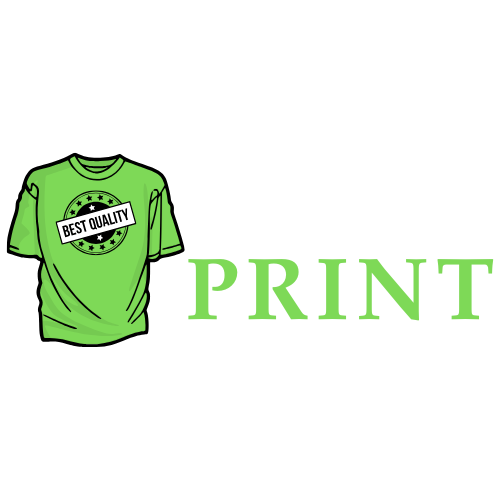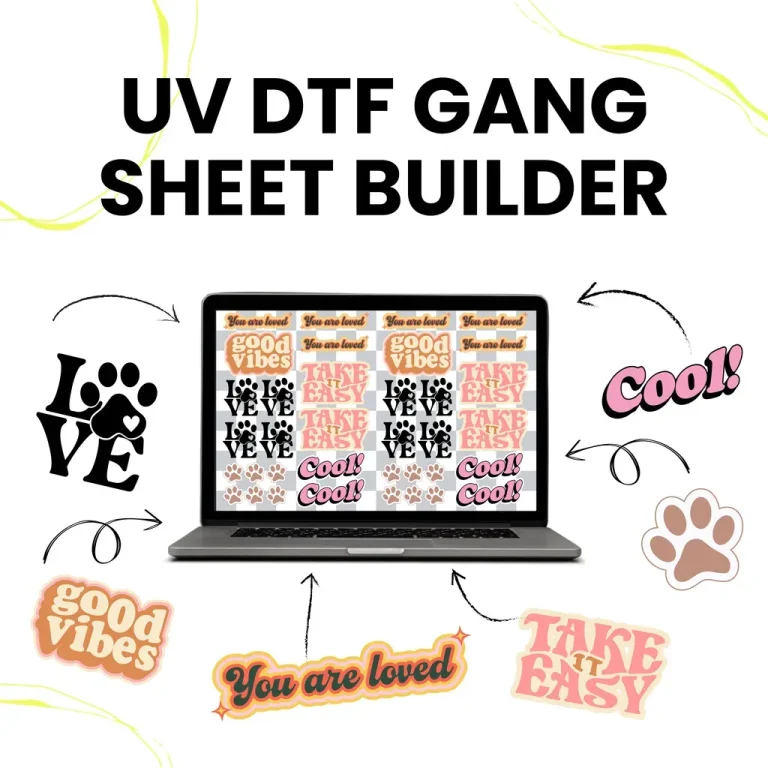The UV DTF Gangsheet Builder represents a turning point for designers who blend creativity with efficiency. By organizing multiple designs into one gangsheet for UV DTF printing, brands can maximize throughput while preserving color accuracy. This approach bundles patterns for apparel and accessories into a single workflow, reducing setup time and waste. It supports seamless DTF apparel customization, enabling consistent branding across T-shirts, hoodies, caps, and bags. When applied to UV DTF on fabrics, the method delivers vibrant, durable results and scalable production.
Viewed through an alternate lens, this workflow is a UV-direct-to-fabric sheet strategy that consolidates several artworks into one print run. By leveraging a multi-design layout on a single sheet, designers can achieve cohesive branding across apparel and accessories while optimizing ink use. In practice, the concept aligns with UV printing on textiles, digital garment customization, and scalable production workflows that support on-demand merchandising.
Introducing the UV DTF Gangsheet Builder: A New Era for Efficient UV DTF Printing
The UV DTF Gangsheet Builder represents a turning point for apparel and accessories designers by consolidating multiple artwork panels onto one gangsheet for UV DTF printing. This approach boosts throughput while preserving color accuracy and detail, enabling brands to scale projects without sacrificing quality. By leveraging rapid UV curing, inks bond firmly to fabrics, yielding vibrant results on cotton, blends, denims, and synthetics.
This workflow is particularly powerful for all-over prints, bold typography, and photographic imagery that demand depth and fidelity. For teams focused on UV DTF printing, the gangsheet mindset reduces setup time and material waste, creating a more predictable production cadence. The result is a cohesive, brand-consistent look across shirts, hoodies, totes, and accessories with improved turnaround times.
Adopting this builder supports a more story-driven, SEO-friendly product narrative. By aligning design templates with a robust color-management process, brands can maintain a unified visual language across multiple SKUs, while keeping production lean and scalable for apparel and accessories customization.
Maximizing Throughput and Color Fidelity with Gangsheet Printing
Gangsheet printing optimizes layout density by arranging multiple designs on a single sheet, minimizing ink changes and reducing machine downtime. This approach directly impacts throughput, enabling higher daily output for UV DTF printing projects without compromising color fidelity or detail.
Effective gangsheet layout optimization considers bleed, margins, and safe zones to prevent cropping during trimming or garment assembly. Consolidating similar color blocks and planning large, photo-like areas helps maintain consistent hues across all items, which is essential for DTf apparel customization and brand continuity. Color management workflows—soft-proofing, monitor calibration, and print proofs on fabric swatches—further protect color integrity.
Creative Design Strategies for All-Over UV DTF Prints on Apparel
Apparel designs benefit from all-over UV DTF prints that cover fronts, backs, sleeves, and panels with photo-like depth. The UV DTF Gangsheet Builder makes it feasible to coordinate gradients, sky scenes, and abstract motifs across multiple garments, preserving continuous artwork across a range of apparel items.
Layered textures and emboss-like effects can be achieved by printing in sequential passes or using selective color separations with precise registration. This capability strengthens DTF apparel customization by delivering tactile, high-impact visuals—without the setup burdens of traditional processes. Testing on different fabrics ensures the look remains consistent from cotton tees to blends and synthetics.
Expanding Reach: UV DTF on Fabrics for Accessories and Personalization
The reach of UV DTF printing extends beyond garments to accessories such as caps, bags, totes, phone cases, wallets, and pouches. Gangsheet layouts let designers bundle multiple accessory designs into a single print run, maximizing sheet utilization and lowering per-item costs while maintaining color accuracy and fine detail.
This approach supports apparel and accessories customization across product categories, enabling cohesive merchandising. Patches, appliqués, and transfer-based embellishments become practical to produce in volume, with vibrant UV-cured colors and durable adhesion that stand up to daily wear and washing.
Workflow Mastery: Color Management, Substrate Testing, and Quality Control
A disciplined workflow underpins consistent results with the UV DTF Gangsheet Builder. Start with clean vector logos and high-resolution raster art, then convert designs to the correct UV ink palette and verify color separations align with sheet layouts. Maintaining uniform bleed, margins, and safety zones helps prevent cropping during trimming and garment assembly.
Substrate testing and ongoing quality control are critical. Test each fabric type—cotton, blends, denim, synthetics—with your UV inks to observe adhesion, hand feel, stretch, and wash durability. Document results to inform future runs and ensure dependable DTF apparel customization across new collections. A structured QC protocol—alignment checks, color accuracy verifications, and defect scans—reduces returns and protects brand reputation.
Sustainability, Cost Savings, and Future Trends in UV DTF Printing
Consolidating multiple designs onto one sheet lowers waste and ink consumption per item, contributing to a more sustainable UV DTF printing workflow. When selecting inks, prioritize formulations with strong color fastness and low odor, and perform wash-fast testing to guarantee garment longevity across apparel and accessories customization programs.
From a cost perspective, gangsheet production reduces setup time and per-unit expenses, improving ROI as you scale. Looking ahead, expect automation in layout optimization, color management, and prepress checks to further streamline UV DTF printing. By treating gang sheets as living documents—refining templates in response to demand and feedback—teams can sustain growth while maintaining high-quality, scalable output.
Frequently Asked Questions
What is the UV DTF Gangsheet Builder and how does it improve UV DTF printing efficiency?
The UV DTF Gangsheet Builder is a workflow tool that arranges multiple artwork panels on a single gangsheet for UV DTF printing. By consolidating designs, it boosts throughput, preserves color accuracy, reduces material waste, and simplifies production workflows for UV DTF printing.
How can the UV DTF Gangsheet Builder support apparel and accessories customization?
This tool enables cohesive apparel and accessories customization by mapping a core motif across T-shirts, hoodies, caps, tote bags, and more on one gangsheet. It supports unified branding, rapid prototyping, and scalable DTF apparel customization.
What are the essential workflow steps when using the UV DTF Gangsheet Builder on fabrics?
Key steps include file preparation with vector logos and high-res artwork, color management for UV inks, optimized gangsheet layout, substrate testing for different fabrics, precise curing, and finishing QC to ensure consistent results on UV DTF on fabrics.
How should color management and proofing be handled in UV DTF printing with gangsheet layouts?
Invest in color-managed workflows: calibrate monitors, soft-proof designs, and print proofs on fabrics similar to final runs. Align color separations with sheet layouts and perform inline checks to minimize misregistration in gangsheet printing.
What are the sustainability and cost benefits of using the UV DTF Gangsheet Builder for DTF apparel customization?
Using gangsheet layouts consolidates multiple designs into one print run, reducing ink usage and waste while lowering setup times. This boosts margins and supports sustainable DTF apparel customization across collections.
What practical tips would you share for starting with UV DTF on fabrics using gangsheet layouts?
Start with a clear bleed and safe zone plan, test swatches on target fabrics, organize a batch-friendly layout, verify color accuracy early, and implement a simple QC check to ensure reliable results with UV DTF printing on fabrics.
| Topic | Key Points |
|---|---|
| What is the UV DTF Gangsheet Builder? | A workflow concept and design tool that arranges multiple artwork panels onto a single sheet for UV-cured DTF printing, enabling all-over patterns, bold typography, and high-fidelity imagery with improved efficiency and reduced waste. |
| SEO relevance for apparel storytelling | Supports scaling visuals across multiple SKUs and aligns focus keywords (e.g., UV DTF printing, gangsheet printing, DTF apparel customization) with rich content to address user intent and improve search visibility. |
| Creative Applications — Apparel | – All-over prints on tees/hoodies for full-bleed, photo-like imagery across fronts, backs, sleeves, or panels; careful color separations and bleed for depth. – Layered textures and emboss-like effects via sequential passes or multi-color registration. – Seasonal campaigns and limited editions with a cohesive brand voice. – Variable data/personalization to customize items at scale. – Fabric variety and compatibility (cotton, blends, light synthetics) with swatch testing for color fidelity. – Color management and proofing to maintain brand color integrity. |
| Creative Applications — Accessories | – Caps, bags, tote designs with consistent color and detail on smooth fabrics and coatings. – Small items (phone cases, wallets, pouches) for high-contrast graphics and efficient bundling on one sheet. – Patches/appliqués via transfer materials for easy rework. – Pouches and organizers with cohesive branding across products. – Special finishes/effects (gloss or subtle metallic accents) via selective UV curing. |
| Workflow & Quality | – File prep and color management: vector logos, high-res art, correct UV ink palette, bleed/margins. – Gangsheet layout optimization: maximize density, minimize ink changes, plan for parallel queues. – Substrate testing: test cotton, blends, denim, synthetics for adhesion and durability. – Drying and curing: consistent cure to prevent color shifts or soft edges. – Finishing & QC: simple checks for alignment, color accuracy, and defect scanning. |
| Sustainability & Cost | – Consolidated gangsheet designs reduce waste and ink usage per item. – Inks with strong color fastness and low odor; perform wash-fast testing. – Bulk production on gang sheets lowers setup time and per-item cost (ROI). – Track ink usage, substrate waste, and labor hours saved per batch for ongoing justification. |
| Case Studies & Real-World Tips | Example: a small fashion brand maps a core motif across shirts, hoodies, tote bags, and phone cases on one gangsheet, achieving cohesive visuals and faster go-to-market. Balance design complexity with sheet efficiency; choose bold apparel artwork and high-impact accessories; reserve fine details for close inspection. |
| Future Trends & Best Practices | Expect faster print speeds, wider color gamut, and broader substrate compatibility. Increased automation for layout optimization, color management, and real-time prepress checks. Treat the gangsheet as a living document—update templates, test new fabrics, and adapt layouts to demand and feedback. |

